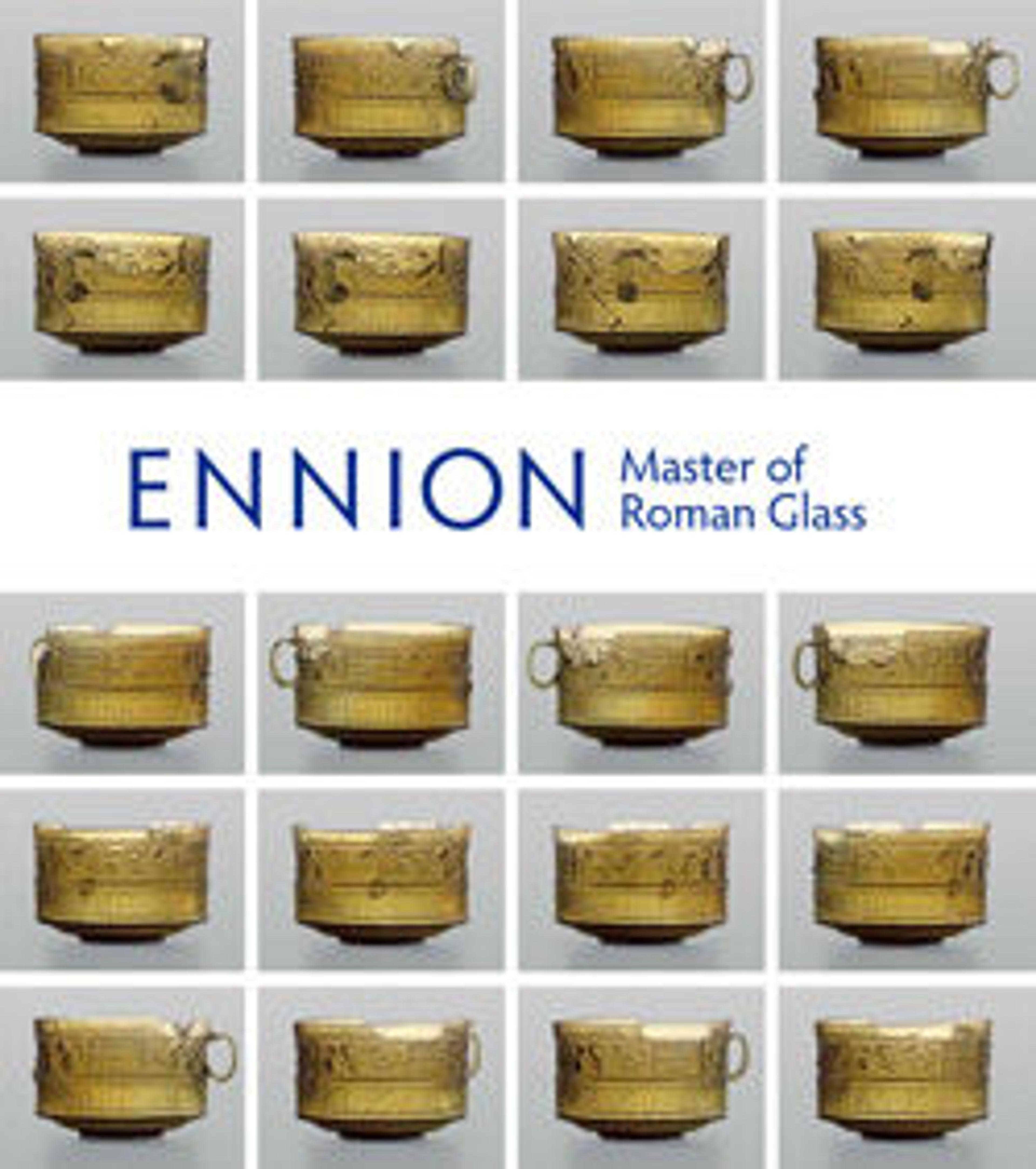Glass gladiator cup
Translucent greenish yellow.
Everted, unworked, knocked-off rim; slightly irregular and oval-shaped body with vertical sides; convex undercurve with low base ring; flat but uneven bottom. A continuous mold seam runs from rim, down sides (concealed by palm fronds), and across bottom.
On body, two friezes run around the sides; the upper and narrower frieze contains four names, widely spaced; the lower frieze, flanked above and below by a horizontal ridge, is broader and comprises two scenes divided by vertical palm fronds, each containing two pairs of gladiators in varying stances with four names inserted between them at the top of the scenes.
Broken and repaired, but with some losses to rim and body; a few pinprick and larger bubbles, and a few gritty impurities; slight dulling and pitting, and faint iridescent weathering.
The scene around the cup depicts four pairs of gladiators fighting. Each man is identified by name in the Latin inscription above him. Some of the names match those of known gladiators who became famous in games held in Rome during the Julio-Claudian period, suggesting that such cups may have been made as souvenirs.
Everted, unworked, knocked-off rim; slightly irregular and oval-shaped body with vertical sides; convex undercurve with low base ring; flat but uneven bottom. A continuous mold seam runs from rim, down sides (concealed by palm fronds), and across bottom.
On body, two friezes run around the sides; the upper and narrower frieze contains four names, widely spaced; the lower frieze, flanked above and below by a horizontal ridge, is broader and comprises two scenes divided by vertical palm fronds, each containing two pairs of gladiators in varying stances with four names inserted between them at the top of the scenes.
Broken and repaired, but with some losses to rim and body; a few pinprick and larger bubbles, and a few gritty impurities; slight dulling and pitting, and faint iridescent weathering.
The scene around the cup depicts four pairs of gladiators fighting. Each man is identified by name in the Latin inscription above him. Some of the names match those of known gladiators who became famous in games held in Rome during the Julio-Claudian period, suggesting that such cups may have been made as souvenirs.
Artwork Details
- Title: Glass gladiator cup
- Period: Early Imperial, Neronian or early Flavian
- Date: ca. 50–80 CE
- Culture: Roman
- Medium: Glass; blown in a two-part mold
- Dimensions: H. 3 1/8 in. (7.9 cm)
- Classification: Glass
- Credit Line: Gift of Henry G. Marquand, 1881
- Object Number: 81.10.245
- Curatorial Department: Greek and Roman Art
Audio
1077. Glass gladiator cup, Part 1
0:00
0:00
We're sorry, the transcript for this audio track is not available at this time. Please email info@metmuseum.org to request a transcript for this track.
Listen to more about this artwork
More Artwork
Research Resources
The Met provides unparalleled resources for research and welcomes an international community of students and scholars. The Met's Open Access API is where creators and researchers can connect to the The Met collection. Open Access data and public domain images are available for unrestricted commercial and noncommercial use without permission or fee.
To request images under copyright and other restrictions, please use this Image Request form.
Feedback
We continue to research and examine historical and cultural context for objects in The Met collection. If you have comments or questions about this object record, please contact us using the form below. The Museum looks forward to receiving your comments.
